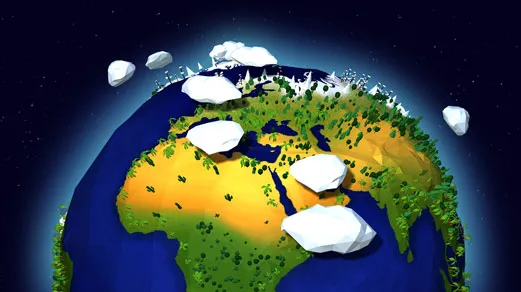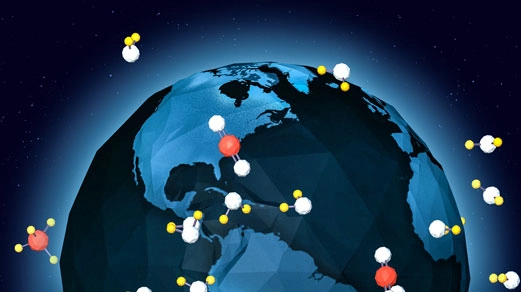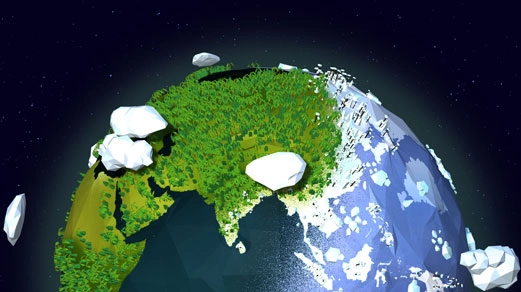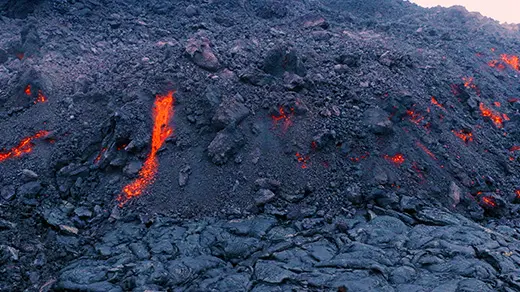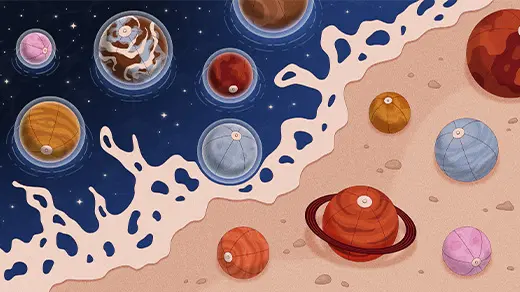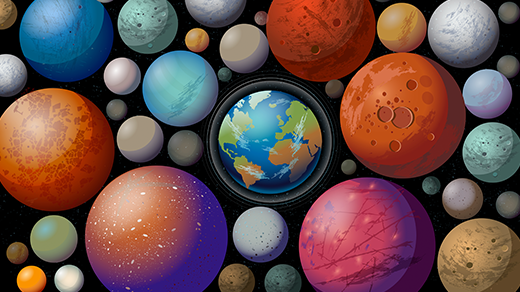What's up in
Planetary science
Latest Articles
How We Came To Know Earth
Climate science is the most significant scientific collaboration in history. This series from Quanta Magazine guides you through basic climate science — from quantum effects to ancient hothouses, from the math of tipping points to the audacity of climate models.
The Climate Change Paradox
Earth’s climate is chaotic and volatile. Climate change is simple and predictable. How can both be true?
The Quantum Mechanics of Greenhouse Gases
Earth’s radiation can send some molecules spinning or vibrating, which is what makes them greenhouse gases. This infographic explains how relatively few heat-trapping molecules can have a planetary effect.
A Biography of Earth Across the Age of Animals
New reconstructions of 540 million years of climate history show the planet tumbling between icehouse and hothouse states, revealing how rare and vulnerable our temperate moment is.
Why Is Venus Hell and Earth an Eden?
A team of scientists has investigated how Earth’s twin became so inhospitable, and whether the same will happen to our planet.
Earth’s Core Appears To Be Leaking Up and Out of Earth’s Surface
Strong new evidence suggests that primordial material from the planet’s center is somehow making its way out. Continent-size entities anchored to the core-mantle boundary might be involved.
What’s Going On Inside Io, Jupiter’s Volcanic Moon?
Recent flybys of the fiery world refute a leading theory of its inner structure — and reveal how little is understood about geologically active moons.
The Road Map to Alien Life Passes Through the ‘Cosmic Shoreline’
Astronomers are ready to search for the fingerprints of life in faraway planetary atmospheres. But first, they need to know where to look — and that means figuring out which planets are likely to have atmospheres in the first place.
How Will We Know We’re Not Alone?
The first planet beyond our solar system was identified just 30 years ago. Since then, thousands have been found and characterized. As we look for more, exoplanet experts are also probing for signs of alien biospheres hundreds of light-years away. In this episode, co-host Janna Levin speaks with astrophysicist and astrobiologist Lisa Kaltenegger about how we’ll know we’re not alone in the cosmos.
